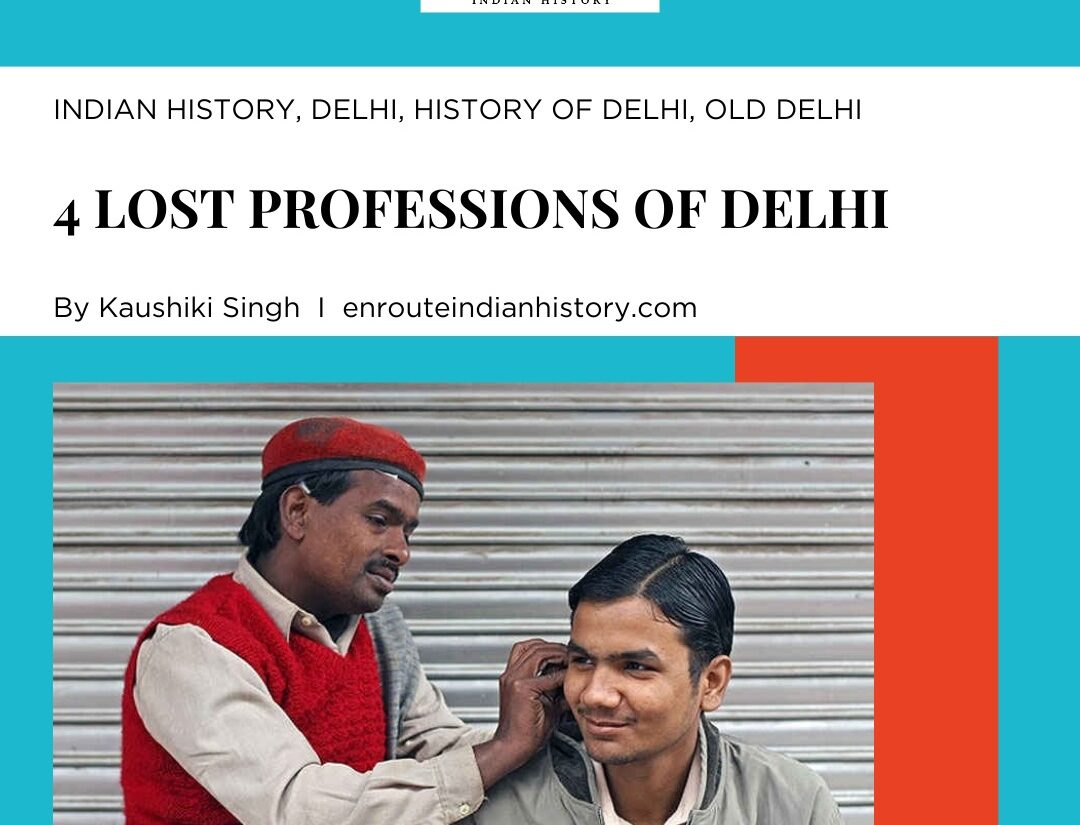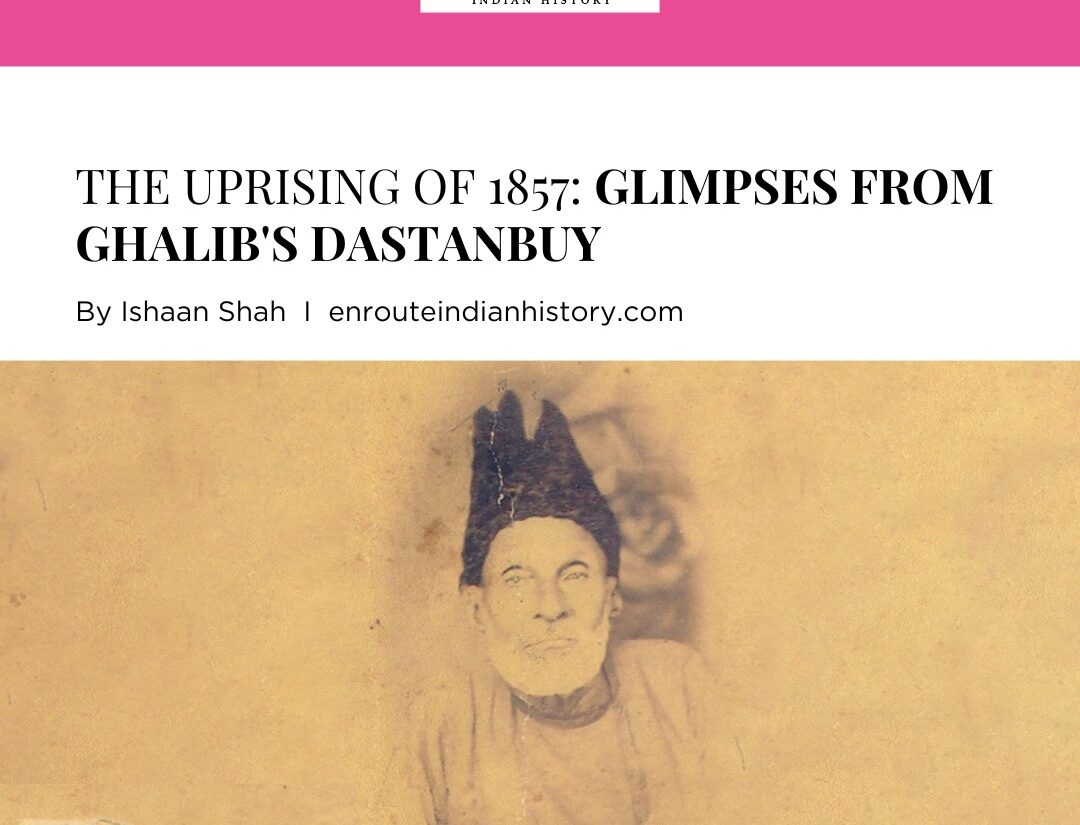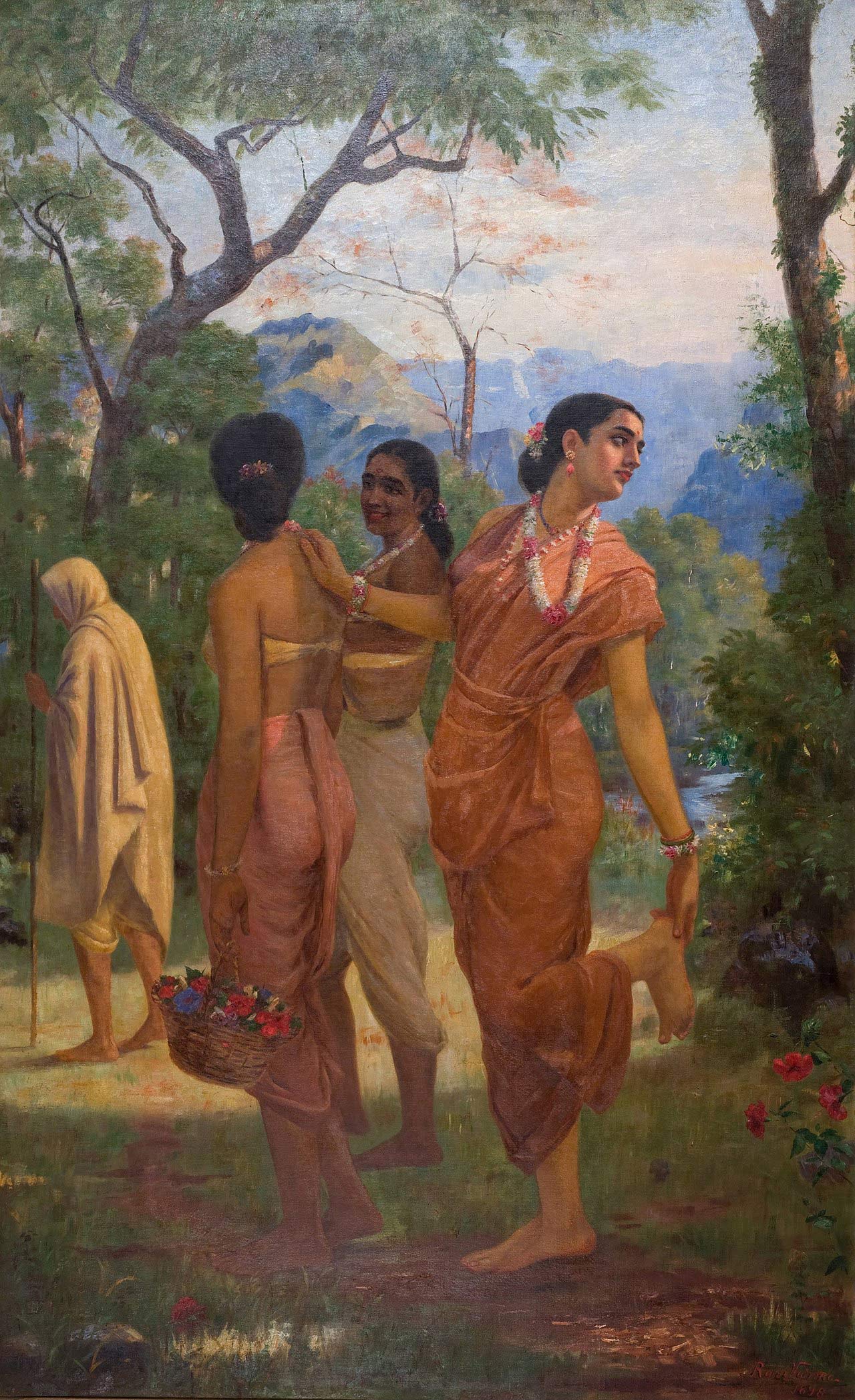
In the time of ‘elite’ professions like engineers, doctors, teachers, architects, scientists etc. , we see many occupations that once played a major role in day-to-day life of the people in the past, have now become extinct or on the verge of being lost. Some of them included the knife grinders (Chaku tez karne wala), the rudaalis in Rajasthan, the ittarwallas, the godna artists in Jharkhand, storytellers of Andhra, the Genealogists of Haridwar, kabootar baaz (pigeon rearers). The major reason for these dying professions is no doubt, the advent of technology which has transformed on one hand and displaced on the other, the traditional way of living. Now every task could be done by a device anytime and the manpower has reduced dramatically. This article will especially talk about some of the lost professions of Delhi that once thrived in the city.
BHISTI WALLAHS (WATER CARRIERS)

(Source- The Delhi Walla; Bhisti wallah of old delhi)
The Bhistis of old Delhi refers to a community of water carriers that is said to be perhaps the oldest professions before the city came into being. Bhistis have been supplying pilgrims, business and passersby with swigs from their swollen mashaq since the time of mughals. Tracing the origin, it is said that Bhistis claim divinity from the epic battle of Karbala that was fought on the banks of the Euphrates in 680 CE. In the battle, an enemy arrow pierced a water-skin meant for the thirsty army of Prophet Muhammad’s grandson Hussein. The loss of water accelerated the end of an uneven battle. In the present time, Shia Muslims marked the defeat and death of Hussein during Muharram, with ritual bloodletting in street processions. Unlike today where water tankers are used, the bhistis was tasked to clean the blood off the street. This way they played a major role in the daily life of the people as well as had religious significance. A British naturalist Edward Aitken in 1897, has well explained the term ‘bhistis’ in his book Behind the Bungalows. He put forth, “Behisht is a persian tongue that means paradise, and a Bihishtee refers to an inhabitant of paradise, a seraph or an angel of mercy.” In his book, he also talks about the making of mashaq that is used for carrying water by the bhistis. During the festival of Bakr-Id, the choicest goatskins are produced and the bark that secretes organic chemicals converts skin into leather. The skin is soaked for around 20 days, then dried and the surface is rubbed with Buffalo fat for waterproofing. The mashaq makers then stitch the leather by hand using thick white threads. The source of water for the bhistis were the underground basin deep beneath the Warrens and the monuments in old delhi built under the mughal era. Today, very few bhistis are left in the city and their profession is eventually fading into the pages of history.
THE LETTER WRITERS

(Source-News 18; the letter writing in old delhi)
Today we can connect to different corners of the world by just a phone call or social media sites like Instagram, Facebook, Twitter and many more. Even sending messages through whatsapp requires only a few seconds. But in the ancient and medieval times, letter writing was an integral part in the daily life of the people for transmission of the message. In old Delhi, for centuries letter writers have helped millions of illiterate people by moulding their emotions into a letter to express them to their loved ones. Under Mughal rule, the Munshis were employed in the courts of the Kings and nobles who composed letters for aristocrats and Katibs who copied documents and books. When the British came and set up India’s modern Postal network in 1854, they formalised the system of professional letter writers. Therefore during that time, one could surely find a man sitting quietly in a corner of the street, outside of a post office devoted in the task of writing letter and a long queue of common people in front of these ‘public’ letter writers, waiting for their turns.

(Source- The Wire; A munshi in the mughal court)
The people that these letter writers would pen down on behalf, included illiterate and poor like labourers, hawkers, sex workers etc and had both formal and intimate messages including love letters. Strong hold over the language, creative mind and a legible handwriting was crucial for the ‘public’ letter writers. But this profession is one the verge of extinction due to advancement in the telecommunication sector and rising literacy and education among the people. The professionals who were once an important medium for the common people to deliver their feelings and thoughts are now disappearing as a thing of the past.
KAAN MAELIYA (EAR WAX CLEANERS)
(Source- So City; the ear wax cleaners of old delhi)
To the present generation, the idea of getting your ears cleaned in the middle of the street by someone is quite absurd. But Kaan Maeliya (ear wax cleaners) was actually a demanding profession in the earlier times. On the streets of Old Delhi, a man wearing a red cap and carrying a box of sharp tools with them was a usual sight. This practice goes back to the Mughal period where kaan maeliya worked closely with kings and emperors for cleaning their ears. This resulted in the forming of a relationship of intimacy and confidence between them and they subsequently became a source of royalty gossip among commoners. The profession has been carried on by generations but they now see steep downfall.
The tools of a kaan maeliya are of two types- a needle-like object of steel called Chimti (prong), which is used to remove wax from the auditory canal. Secondly, a silaai (needle-like) with cotton is used to apply oil after cleaning the ears. These professionals can still be seen roaming around the areas of chandni chowk, Jama Masjid, Connaught place and chawri bazaar. One of the main reasons for its decline is the opposition of this archaic method by professional doctors. Today’s medical professionals have argued that since the same needle is used by these kaan maeliyas for cleaning the ears of every customer, this can further lead to fungal infections or the wrong process of inserting it can lead to aggravated ear problems.
THE CALLIGRAPHERS OF OLD DELHI

(Source- Homegrown; the scribes performing calligraphy)
The vibrant spots of old Delhi were once an important centre for the urdu calligraphers or were called, ‘kaatibs’. Calligraphy is an art form related to writing that involves design and execution of lettering with a pen, ink brush or any other writing instrument. Indian calligraphy goes back to the Mauryan age during the 2nd century where we find Ashokan edicts engraved on rocks to spread the message of dhamma. The most famous one is the Islamic style, traces of which can be found on the medieval monuments in Delhi such as Qutub Minar, Agrasen Ki Baoli. During the Mughals, calligraphy was considered an honourable act and emperors used to provide patronage to these ‘kaatibs’ for their work. Even Bahadur Shah Zafar, the last Mughal emperor, was well-known for his interest in poetry and was an excellent calligrapher. But now, this ‘noble’ profession is nowhere to be found in the city except for some handful of scribes in areas of old Delhi. Mohammad Ghalib is one of the last katib left in the celebrated urdu bazaar of old Delhi who has been practising the art for 40 years now. He studied calligraphy at Darul Uloom university in Saharanpur. Talking about their profession and reason for their downfall, he described it as “A game of the Youthful”. Ghalib said that there is a special manner to sit when writing letters in calligraphic style. Before the advent of computers and other technology, it was one of the most valued jobs. Therefore we see the occupations that once had significance, have now lost their charm due to the changing time and requirements of the people. Even the remaining practitioners in the city are getting meagre income because of the insufficient demand. The occupations discussed above were not only meant for fulfilling the needs of the general public but were also subjected to royal power in ancient times. So their popularity among people could be attributed to this fact.
REFERENCE
- https://www.thehindu.com/society/history-and-culture/a-bhisti-ruled-an-empire-once/article24601760.ece
- https://rahamanastoryteller.wordpress.com/2018/08/24/bhishtis-the-traditional-water-carriers-of-old-delhi/
- https://www.bbc.com/news/world-asia-india-26379747
- https://zikredilli.com/f/professional-letter-writing-on-delhi-streets-1930-1940
- https://www.deccanherald.com/india/karnataka/bengaluru/ear-cleaners-cusp-extinction-2215048
- https://so.city/delhi/article/talk-about-desi-jugaad-check-out-these-ear-cleaners-squatting-all-around-the-city
- https://www.hindustantimes.com/delhi-news/the-other-ghalib-meet-one-of-the-last-calligraphers-of-old-delhi-s-urdu-bazaar/story-6FGlwjigaGCNS1A9GbwPGN.html



























